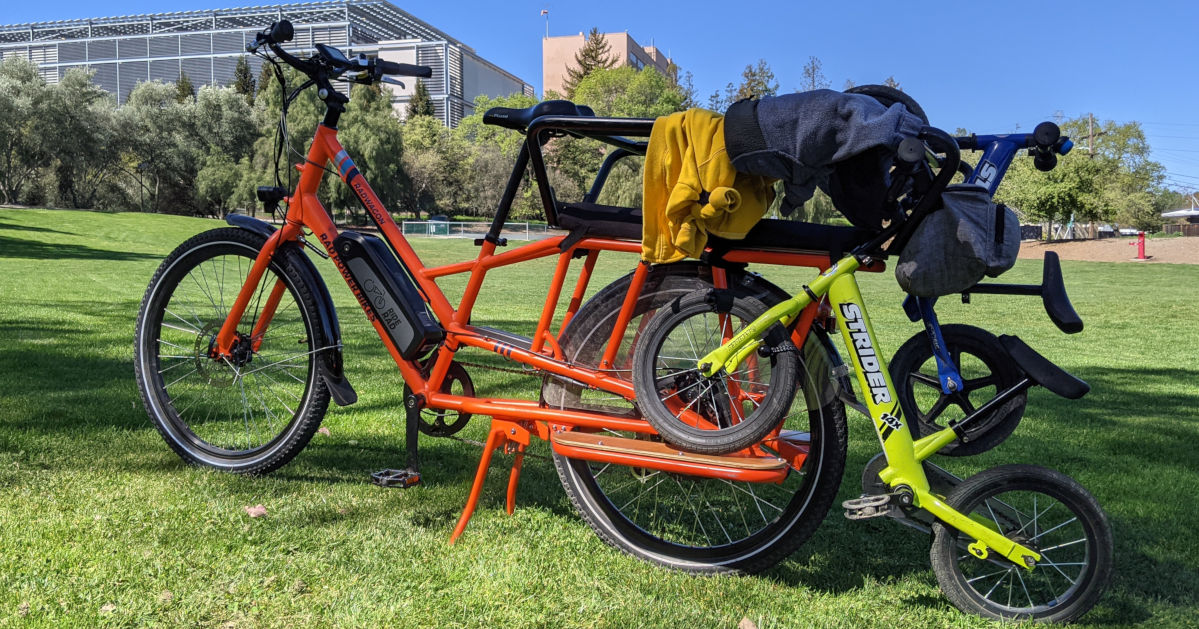A 1850-mile Review of the RadWagon 3

My wife and I bought a RadWagon 3, an inexpensive electric cargo bike made by Rad Power Bikes, right before the pandemic hit in early 2020. We wanted a cargo bike that we could use to haul kids around, and we decided on a cheap one since we weren’t sure it would fit our lifestyle.
We’ve now put 1850 miles on the bike, mostly taking the kids to local parks. After all the time spent with it, would we recommend it to another family?
In short: we love the utility an electric cargo bike offers, and I think we will always have one in the garage to supplement our minivan, but the RadWagon has some significant draw backs that make recommending it difficult. Read on for the full review.
The Bike
We ordered the Rad Wagon from the Rad’s website for $1500. With a “caboose” enclosure and pads for the kids adding $250, plus tax, our total was $1901—not cheap, but almost a third of comparable cargo bikes which are in the $4000–6000 range.
Assembly and Adjustment
The bike comes in a box and you must assemble it yourself. The assembly was not too hard, but I also have a lot of experience with bikes and bike maintenance which helped.
The seat post and headset are highly adjustable, allowing people of varying heights to ride the RadWagon. Both my wife (5’4”) and I (6’1”) can ride it comfortably, but we’re both near the limits. I have the seat all the way up and she has it all the way down.
Motor
The 750W rear hub motor easily brings the bike to its 20 miles per hour computer-limited top speed. The bike has a throttle, which I love for getting started from a stop, and enough power to carry me, two kids, and some balance bikes up a steep hill. The downside though is the hub motor puts a lot of stress on the rear wheel.
Flaws
A flaw in the design is the rear brake. The RadWagon uses cheap, mechanical disc brakes, which are enough to stop the bike when they’re well aligned, but which need constant attention to keep them that way. The motor blocks the typical through-spoke access for adjusting the rear brake. Instead, Rad makes a special flat Allen wrench that fits between the brake and motor but adjusting remains hard.
A major flaw is the rear spokes. They are stressed by both the motor—which puts all its power through the rear wheel—and the cargo. The spokes were not tight enough from the factory and I broke several in the first 200 miles. I have broken fewer since replacing and retightening, but I still break one periodically, which is annoying for me and likely a dealbreaker for less experienced riders.
Support
I’ve contacted Rad’s support several times—to order spokes and the brake tool, and to replace a faulty accessory. They were generally quick and helpful but I’ve never needed support for other bikes. And the last interaction was terrible: Rad’s front basket was defective, and after I sent them photographic proof, they accused me of being unable to use a screw driver and stopped responding. It was the worst support experience I’ve ever had.
Final Thoughts
The RadWagon was a savior during the pandemic, letting us escape the house and ride when we’d otherwise be trapped inside. It also beats driving kids in a car—hauling them on the back makes getting to the park part of the fun.
But the bike needs constant maintenance that is difficult even for an experienced mechanic, and Rad’s support is not great. I wish I had purchased a higher-quality bike that wouldn’t fail so frequently.